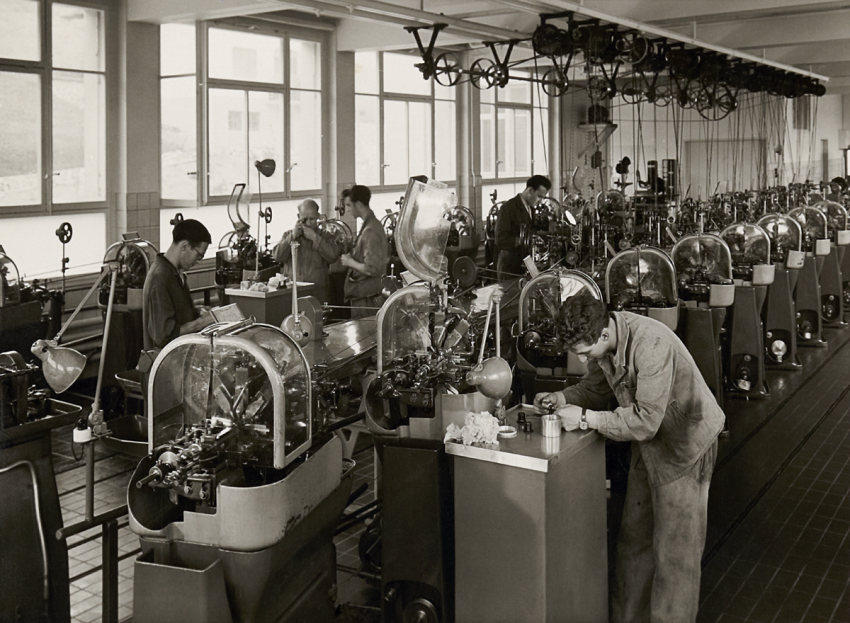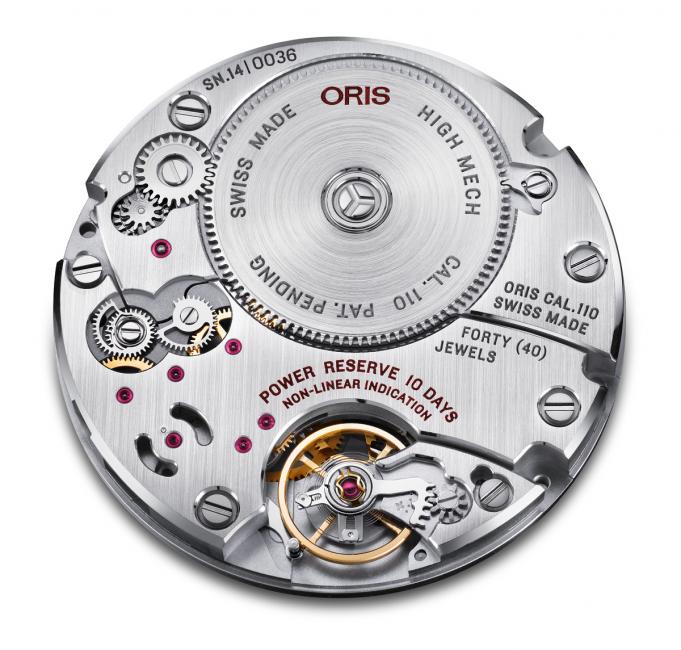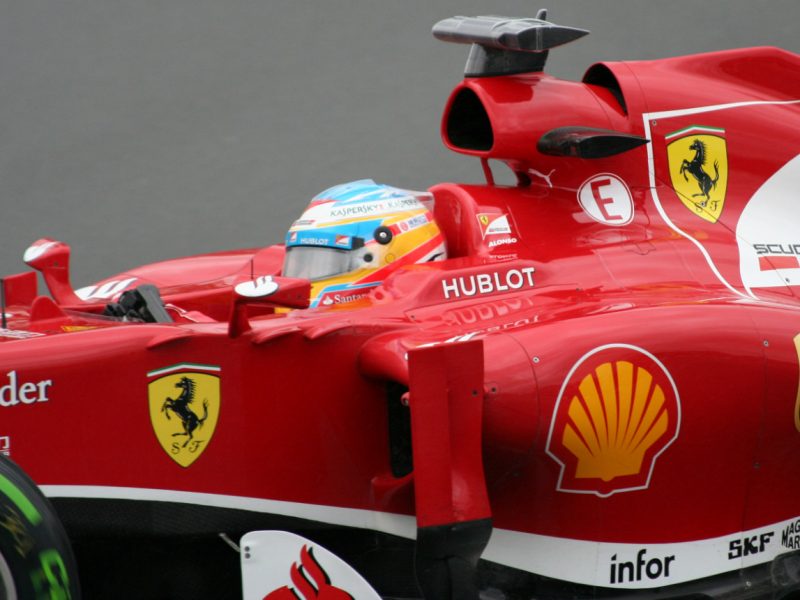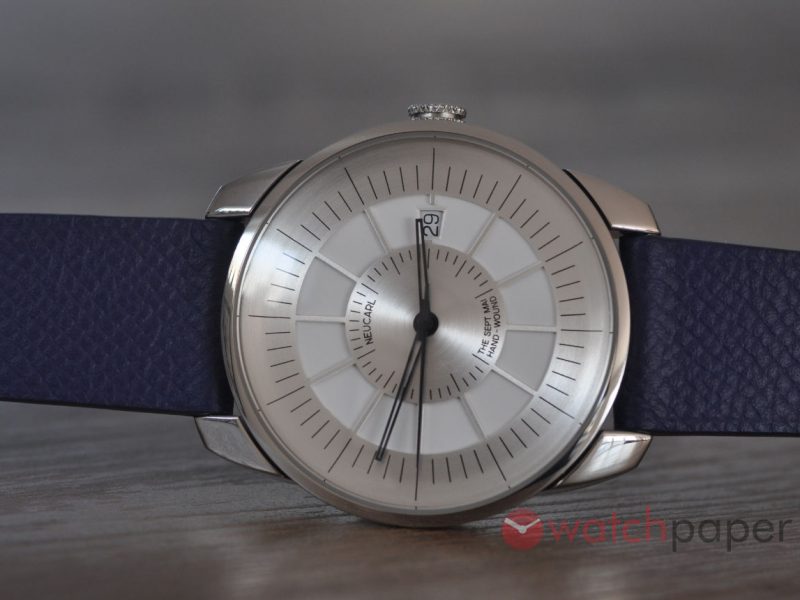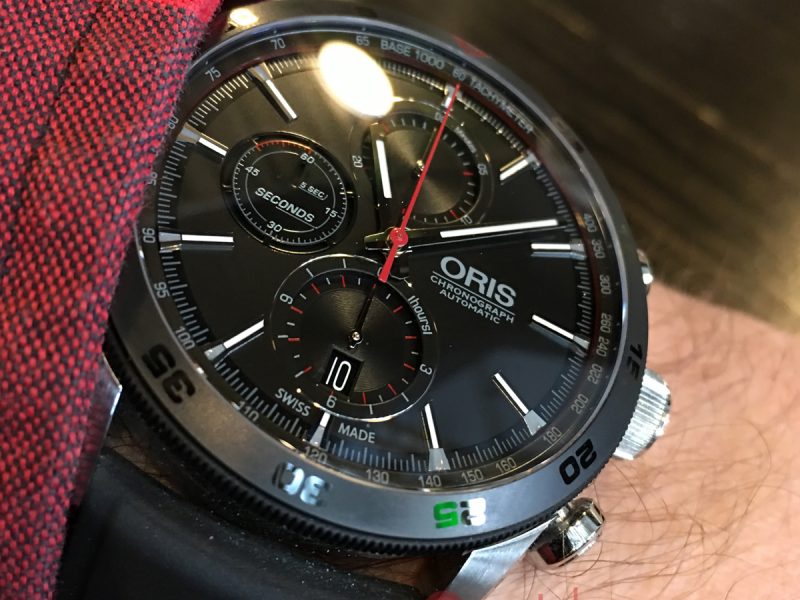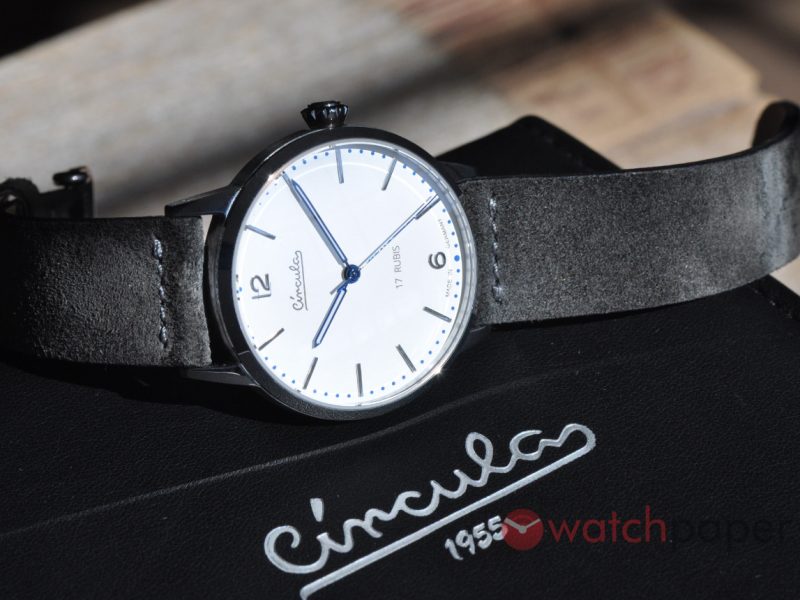ORIS and its historic Calibre 110
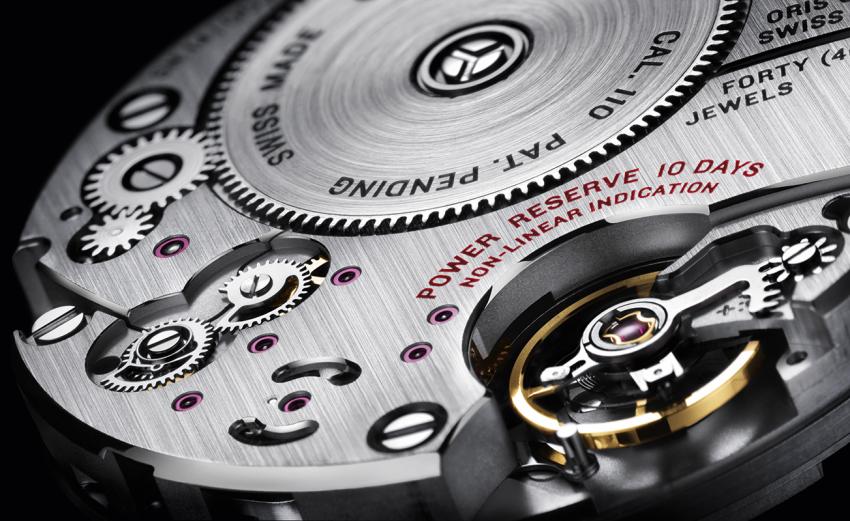
The hand-wound Oris Calibre 110 is the first movement developed from the ground up by Oris since the quartz crisis of the seventies.
Oris introduces a 10-day power reserve movement with a non-linear power reserve indication to mark the company’s 110-year anniversary and 110 years of movement manufacturing.
A bit of history
The Oris story begins in the quiet Swiss town of Hölstein in the Jura Mountains, some 110 years ago. Two watchmakers, Paul Cattin and Georges Christian, arrived in the town looking to set up their own watch company. They purchased a recently closed watch factory and called it Oris, a name they took from a neighbouring stream.
Their dream was to produce the best possible watches at the best possible price. They employed talented watchmakers and skilled craftsmen, and adopted industrial processes in order to deliver their vision. They wanted to pioneer and innovate, to create reliable timepieces that would bring many years of pleasure.
In the late 1920s, the company was bought by a group of investors after the last of the two founders died. It was led by Jacques-David LeCoultre, Antoine LeCoultre’s grandson and the man who merged with Edmond Jaeger to form Jaeger-LeCoultre in 1937.
By the time war broke out in Europe, Oris had established itself as one of the leaders in quality Swiss timepieces. During the war, with its distribution network stymied, Oris turned to producing clocks, which led to the ground-breaking 8-day power reserve model launched in 1949. At that stage, the company produced more than 200,000 watches and clocks a year.
After the war, the company continued on an upward curve. By 1970, it was one of the world’s 10 largest watch companies, employing more than 800 people and producing 1.2 million watches and clocks a year. The continous development of new manufacture movements was key for the company’s development.
That same year, Oris was sold to the General Watch Company, a subsidiary of ASUAG Group, which would eventually become the Swatch Group. But the boom was not to last as the Quartz Crisis kicked in, almost killing off the traditional Swiss watch industry. The influx of cheap quartz watches from the Far East decimated the global mechanical watch market.
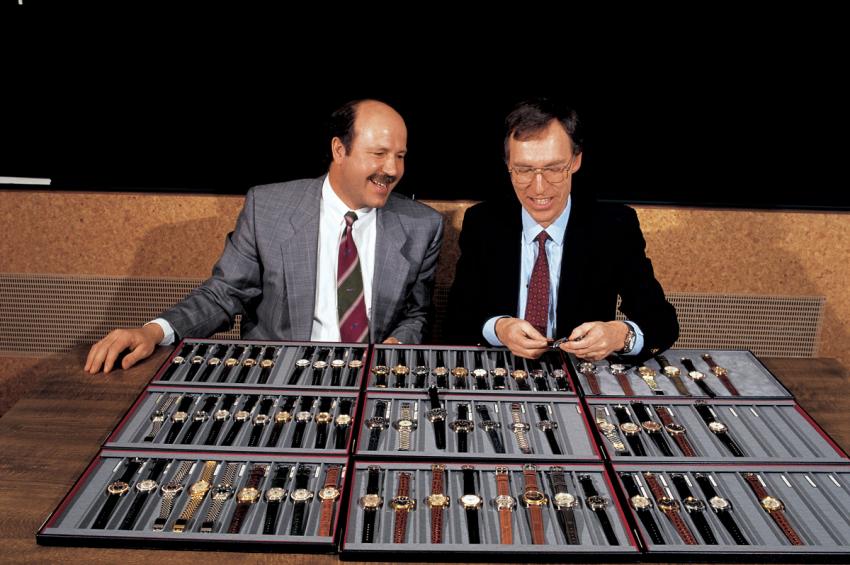
Ulrich W. Herzog (left) and Dr Rolf Portmann, shortly after they staged a management buy-out in 1982. Oris has been an independent company ever since.
As the crisis deepened during the 1970s, an estimated 900 Swiss watchmaking companies went bankrupt, and two thirds of the work force were laid off. Oris was greatly affected by the downturn, but continued to pursue its vision, despite the circumstances. In 1982, the company’s General Manager Dr Rolf Portmann and Head of Marketing Ulrich W. Herzog staged a management buy-out and broke away from the group, and Oris Watch Co SA became Oris SA. Although to the outside world nothing had changed, Oris was now an independent company free to plot its own course into the future.
Portmann and Herzog were entrepreneurs and set about revitalising their company. Herzog travelled the world observing emerging trends and discovered that in influential markets like Japan mechanical watches were resurgent. He convinced his colleagues to drop the quartz strategy that had been forced upon the company by the group, and within a few years Oris has made its last quartz watch, focussing instead on mechanical innovations.
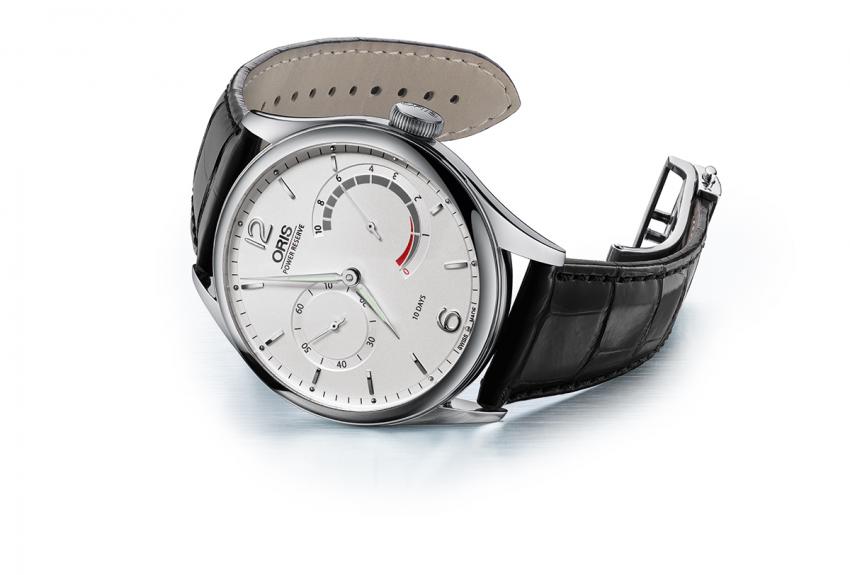
The new Oris 110 Years Limited Edition in stainless steel, powered by Calibre 110. The dial has a non-linear power reserve indication, the first time this complication has been paired with a 10-day power reserve.
Today, over 30 years since the buyout, Oris is thriving. Dr Portmann remains as Honorary Chairman, and the company is run by Herzog, now Executive Chairman. Oris is fully independent and one of the few Swiss watch companies that only makes mechanical watches, and the only one that places such a strong emphasis on presenting consumers with a product that offers genuine value.
Oris Calibre 110 — A unique combination
The Calibre 110 is a hand-wound movement with 10 days power reserve combined with a patented non-linear power reserve indication.
These two complications have never come together before. Uniting them provided an exceptional challenge for Oris’s in-house team of watchmakers and designers, who worked with Swiss technical specialists and with L’École Téchnique Le Locle on the project over a period of 10 years.
Unlike many movements with comparable power reserves, Oris Calibre 110 uses a single-barrelled system. Inside this barrel is a mainspring that would stretch to 1.8 metres if unravelled. Reducing this in size so it fits into a single barrel, without making the calibre over-sized, demonstrates exceptional technical know-how. The watch has been tested to ensure the power is delivered evenly throughout its 10-day cycle.
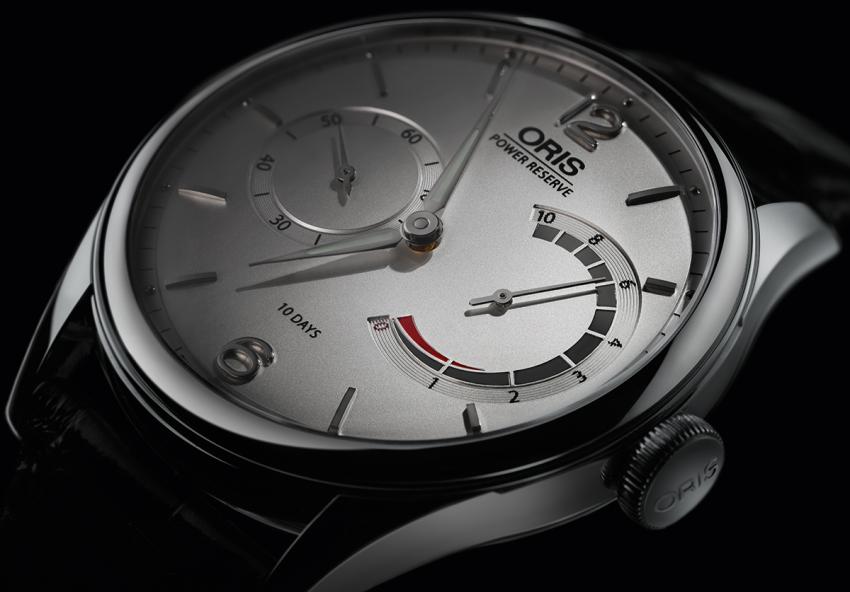
The Oris patented non-linear power reserve indication at 3 o’clock indicates the amount of power remaining in the barrel from 10 days down to zero.
The Calibre 110 features an Oris-patented non-linear power reserve indication. The display at 3 o’clock on the dial indicates the amount of power remaining in the barrel from 10 days down to zero. At the top of the scale, the notches representing the days are close together; at the bottom they are further apart. As the power is released, the hand moves clockwise around the scale, slowly at first, and then more quickly as the notches become more spread out. This gives the wearer a far clearer indication of how much power is left in the watch as the moment to wind it approaches.
We can’t overlook the fact that as an independent company, with the Calibre 110, Oris is preparing the terrain for the time when Swatch Group will stop supplying its ETA movements to outside brands. They do this in the most elegant way possible, by turning to their team of watchmakers and putting together an innovative movement, preparing the brand for the next 100 years.


